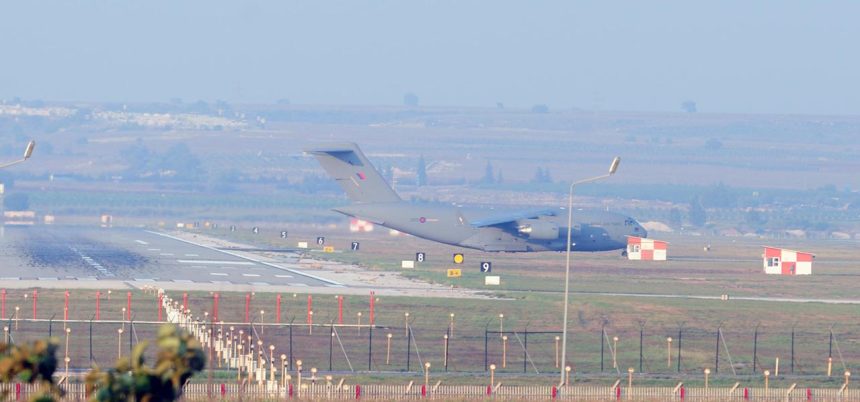Even if it is eventually going to be a cruise missile, heavy bomber and then UAV-only war, with a very limited involvement of tactical aircraft, a future air war on Syria would require a considerable amount of support planes.
Among them, cargo aircraft needed to carry weapons, materials and replenishments for the various detached units and, obviously, many many tankers.
In fact, long range air strikes, as those launched in the beginning stages of the war, with strategic bombers flying from their bases in the Continental US, Diego Garcia or any base in the Middle East area (Thumrait, Al Udeid, Al Dhafra), would require a many tanker airplanes, one of the most important resources for Washington.
For instance, during the air strikes in Libya (that was located relatively close to the airbases in Southern Italy or Greece), each fighter sortie in support of Unified Protector averaged 8 hours and required five air-to-air refueling.
Each heavy bomber flying from the U.S. would require more or less five plugs with a tanker but this means several tankers (15 to 20, depending on how many bombers would take part in the raid) would have to be in the air along the route to support them. In
Some of them will be stationed in the U.S., others, probably, at Moron, in Spain, and more could be based in Greece or Turkey.
Incirlik, in southern Turkey, is among the airbases close to Syria. It already hosts a U.S. detachment supporting UAVs (Predator drones) and could be suitable to host a part of the tanker force required to support war sorties, even if it is within range of an eventual retaliatory attack.
Some U.S. cargo planes were monitored by local media arriving at the base in the last days. Even a RAF C-17 cargo plane arrived at Incirlik on Sept. 4.
In the previous days, few Air Force Special Operation aircraft and ISR (Intelligence Surveillance Reconnaissance) were monitored crossing the Mediterranean sea where many warships are amassing.
Not only U.S. ones (4 destroyers and 1 Amphibious ship) but even Russia’s: the ELINT vessel SSV 201 crossed the Bosporus, heading South, towards the sea off Syria, and the guided-missile cruiser Moskva that is passing the Straits of Gibraltar enroute to the eastern Mediterranean.
In such a tense situation, with aircraft and warships (neither under a unique command nor talking with each other) amassing in the same area, a risk of an incident, like the near engagement of the British Eurofighters with the Turkish Air Force F-16s over Cyprus, is higher.
By the way, talking about the Cyprus incident to journalist Andrew Potter, the British MoD spokeperson said: “The MOD can confirm that Typhoon Air Defence Aircraft were launched from RAF Akrotiri yesterday to investigate unidentified aircraft over the Eastern Mediterranean; the aircraft were flying legally in international airspace; no intercept was required.”
Image credit: Kokpit.aero

















